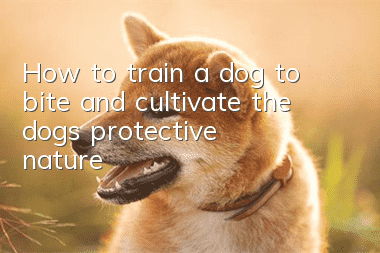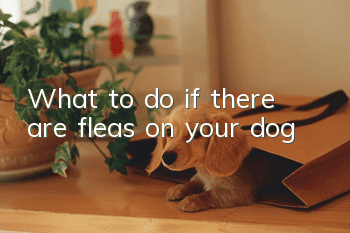How to train a dog to bite and cultivate the dog’s protective nature

Reasons for training dogs to bite
Dog bite behavior training is mainly the most direct and effective measure to prevent and directly stop criminal behavior and external attacks. This training is somewhat dangerous. If you have friends who want to train their own dogs, it is recommended that you use dog training protective gear!Training dogs to bite: cultivating ferocity
Choose an experienced trainer and hide them after being properly disguised. The owner will tie the dog at a certain distance from the assistant trainer. where the owner stands next to the dog. The assistant trainer holds a stick in his right hand and wears a protective sleeve in his left hand. He emerges from a hiding place and makes various violent movements from far to near. He hits the ground with a whip or stick, sometimes attacks and retreats, and tries every possible means to tease the dog and make it bark wildly. . The dog owner encourages the dog to pounce on the assistant trainer and rewards him with the "good" command.After the dog's ferocity is aroused, the assistant trainer can walk up to the dog, watch when the dog opens its mouth, and pass the protective sleeve to the dog to bite. When the dog bites and refuses to let go, the assistant trainer can take off the protective sleeve and continue to tease the dog with a stick, making the dog hostile to the assistant trainer. At this time, the assistant trainer should retreat to the hiding place while teasing.
After several times of this kind of training, when the dog can successfully complete the training subjects, it can move to the next step and training.
Training a dog to bite: training a single dog to bite
Select the training venue in advance, and the assistant trainer will be hidden in the training venue. After the dog owner leads the dog to the training venue, he makes the dog sit upright in a hidden place facing the assistant trainer. The dog owner adopts a half-squatting position and gives the "attention" command to the dog, and the assistant trainer makes a sound to alert the dog.After a moment, the assistant trainer will appear from the hiding place with a stick or tree stick, and continue to beat the ground and make movements. When the dog's ferocity reaches a level enough to bite the assistant trainer, the dog owner should issue a The "attack" command makes the dog pounce and bite; at this time, the assistant trainer should make a fearful retreating action, and finally run away in defeat. The dog owner continues to encourage the dog with the "attack" and "ok" commands, and then ends the training.
Training dogs to bite: training dogs to "let go"
After repeated training with the above method, the dog should be trained to dare to attack and bite the assistant trainer and keep biting. Training a dog to "let go". When the dog owner makes the dog bite the assistant's sleeve, the assistant resists for a while, then lowers his arm so that the sleeve is close to the ground and remains still. At this time, the dog owner lowers the "put" button Give the command and pull the leash back slightly.Some dogs will let go as soon as they hear the owner’s command of “let go”, but some dogs will not let go in this case. The trainer should repeat the command and pull the leash backwards to release the dog. Use your left hand to cut the bridge of the dog's nose or pinch the inner thigh of the dog to force the dog to let go.When the dog develops preliminary conditioned reflexes, the training distance is gradually increased to the point where the dog can be commanded to "release" from a longer distance.
Precautions for training dogs to bite
1. Pay attention to safety. Dog training protective gear should be used for training under the guidance of professionals. Do not try to train by yourself easily.2. Remember to bring a leash with your dog when you go out, and don’t let your dog attack others easily.
3. This training is not recommended for dogs with non-professional needs, such as police dogs and military dogs.
Random articles
- If a dog eats bones and ruptures its intestines, it will die within a few days.
- Dog's diarrhea looks like brown mud
- Can I use Yunnan Baiyao if my dog is lame?
- Is the blood in the dog's urine or stool serious or due to detoxification?
- Where to place the dog house can bring wealth. To remove yin and evil spirits, you must pay attention to the five elements numerology.
- What causes diarrhea in dogs? What dog owners must know about the five main culprits of diarrhea in dogs
- Changsha City organizes rabies prevention and control activities to increase awareness of dog license applications
- Pets that are clingy and clingy. One of these is bound to be your favorite.
- How many meals do dogs need to eat in a day? Big dogs and small dogs are different!
- Is it okay for dogs to sleep outside in autumn? It is better to let dogs sleep indoors in a warm place



